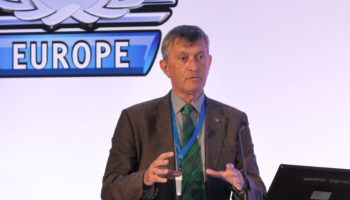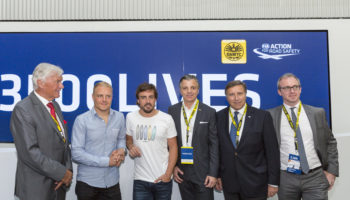From Spor t to Touring and Commuting, from Road Safety to the developments of new “connected” vehicles: these and more topics are dealt with in an interview with Mr John Chatterton-Ross, Director of Public Affairs at FIM and FIM Europe.
t to Touring and Commuting, from Road Safety to the developments of new “connected” vehicles: these and more topics are dealt with in an interview with Mr John Chatterton-Ross, Director of Public Affairs at FIM and FIM Europe.
2016 has seen changes in the political scene. How do you see the future for motorcycling?
“Let’s start with our sport: motorcycle competition is well managed; it is a fantastic sport for our riders and spectators. It is incredibly popular with the hundreds of thousands of spectators at our events, and the millions of people who enjoy motorcycle sport on television and via other media. We should never under estimate this positive contribution to life. – Especially for those who live in troubled parts of our world.
“Our sporting interests can be affected by public policy. The EU Motor Insurance Directive was not written to include motorcycle or motor sports. A decision in the European Court of Justice has changed this. – The Vnuk case”.
Was that about an accident at a track?
“No, it had nothing at all to do with our sport. It was an accident in a farmyard where the unfortunate Mr Vnuk was knocked off a ladder and injured. In deciding the case to ensure he obtained compensation he had earlier been refused, the ECJ ruling affects our sport. We hoped this would be fixed by an amendment to European Union law planned for October 2016 – but this has been delayed.
“There is no appeal against the judgment as it is a decision of the highest court in the EU. The judgment requires insurance for all vehicles and this may be impossible in racing in some countries. – Although it may work in some parts of the EU. The relationship between insurance and case law is affected by the different national legal systems.
“We think the best solution is to amend the EU law to make clear that this law has nothing to do with racing. – To correct the effect of this badly worded ruling by the Court. I don’t believe the judges were thinking about racing motorcycles or racing cars when they made this judgment about an accident on a farm in Slovenia where a man fell from a ladder”.
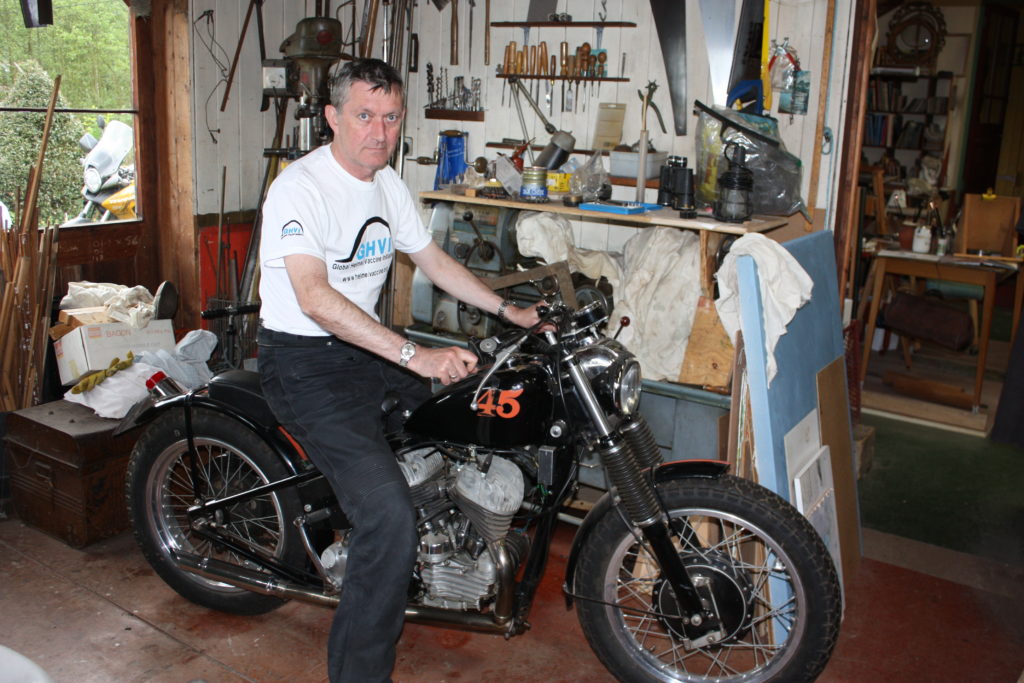
“The “Harley” motorcycle is not actually a Harley. It is a very special and unique machine”, says John Chatterton-Ross.” The engine a new and unused 1941 Canadian built engine. The rest was constructed by my friend William who is an engineer using the best parts from old Nortons and BSAs, and the rest he made himself. This is a bike I have known in its various forms since it was first constructed more than forty years ago”.
Is FIM Europe engaged?
“Yes, the ACU in the UK has taken the lead studying the issue and seeking a solution. Mr Christopher Hodder from the ACU met with the EU Commissioner responsible – but Commissioner Hill resigned following the BREXIT vote so we must increase our efforts with the institutions in Brussels. A solution can be achieved and we will engage with our national federations and other partners.
“EU Commissioner Valdis Dombrovskis is now in charge of the file – but he has to bring the institutions -including the EU Parliament – along with him. The delay is being caused by an, “impact assessment” which means just about everyone in Brussels wants to join the discussion! The Vnuk case affects other areas of insurance in addition to its effect on our sport”.
Do you foresee other issues for the sport in 2017?
“Not at this time….but that is the thing with public policy. It is unpredictable; we don’t have a calendar of events as we have in sport!”
What developments for the touring and commuting riders of Europe?
“We see changes. 2016 saw the introduction of anti-lock braking systems (ABS) as a legal requirement for new motorcycles sold in the EU above 125cc. We were able to influence the drafting of this law back in 2008 when contributing to research produced by the European Transport Safety Council. If you look at the EU law it is as we proposed… with an exception for trial and enduro motorcycles.
“For the smaller bikes the requirement is for a combined braking system. This was a compromise agreed in 2008 as the motorcycle industry said that ABS on small bikes would be too expensive. Technology moves fast and now price of ABS units is less. Many companies are fitting ABS on 125cc bikes and scooters even though they don’t have to”.
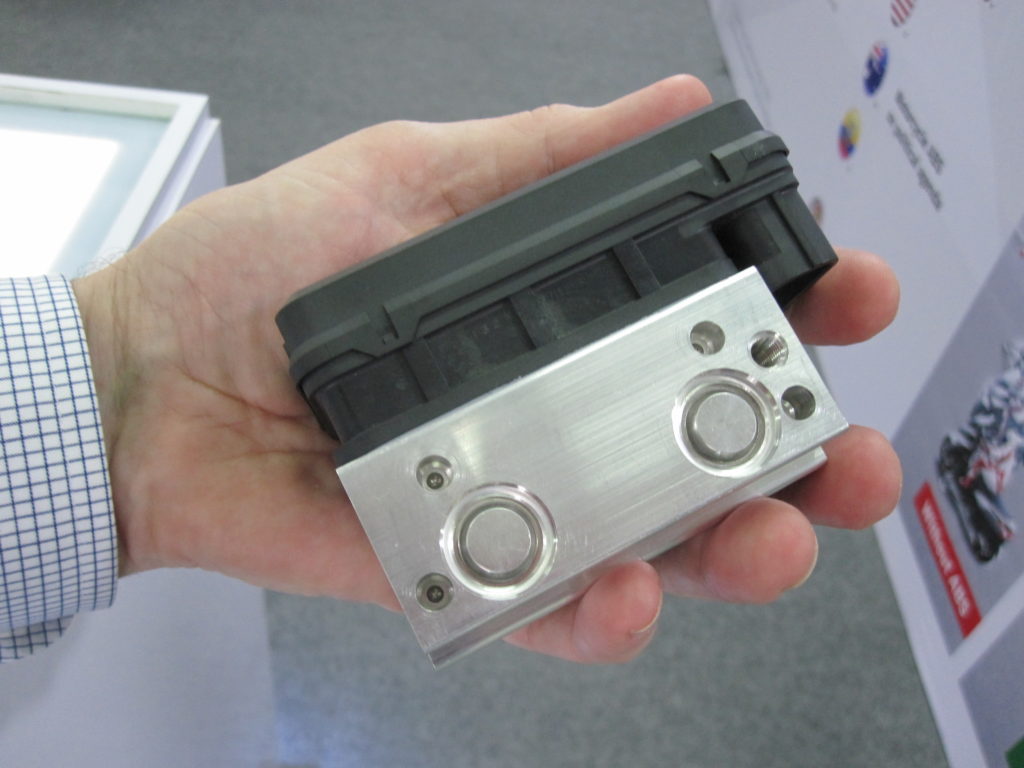
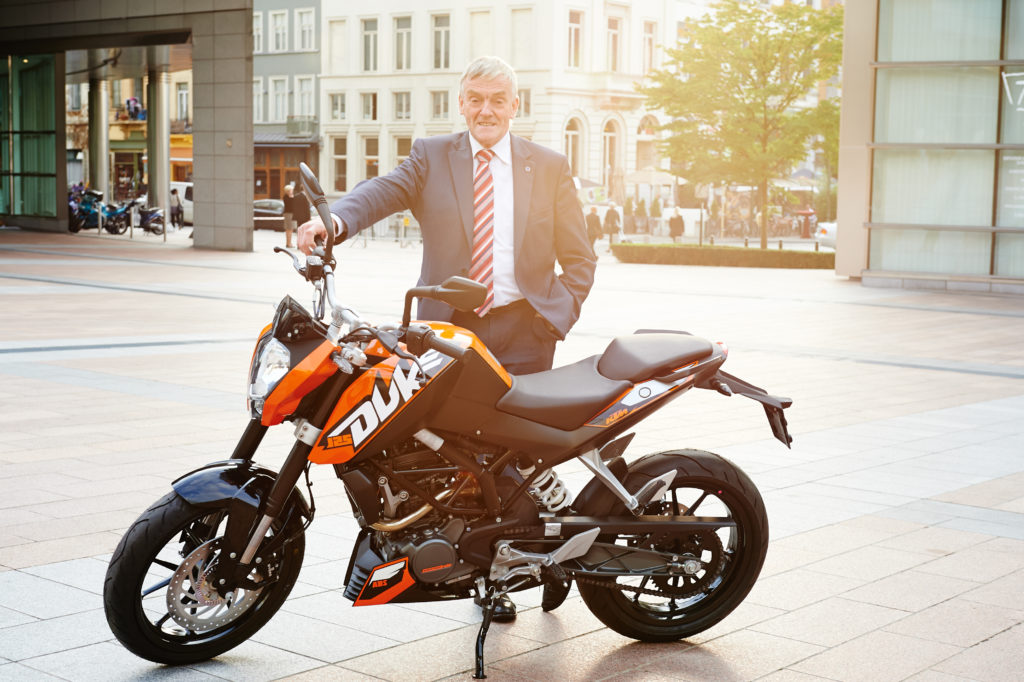
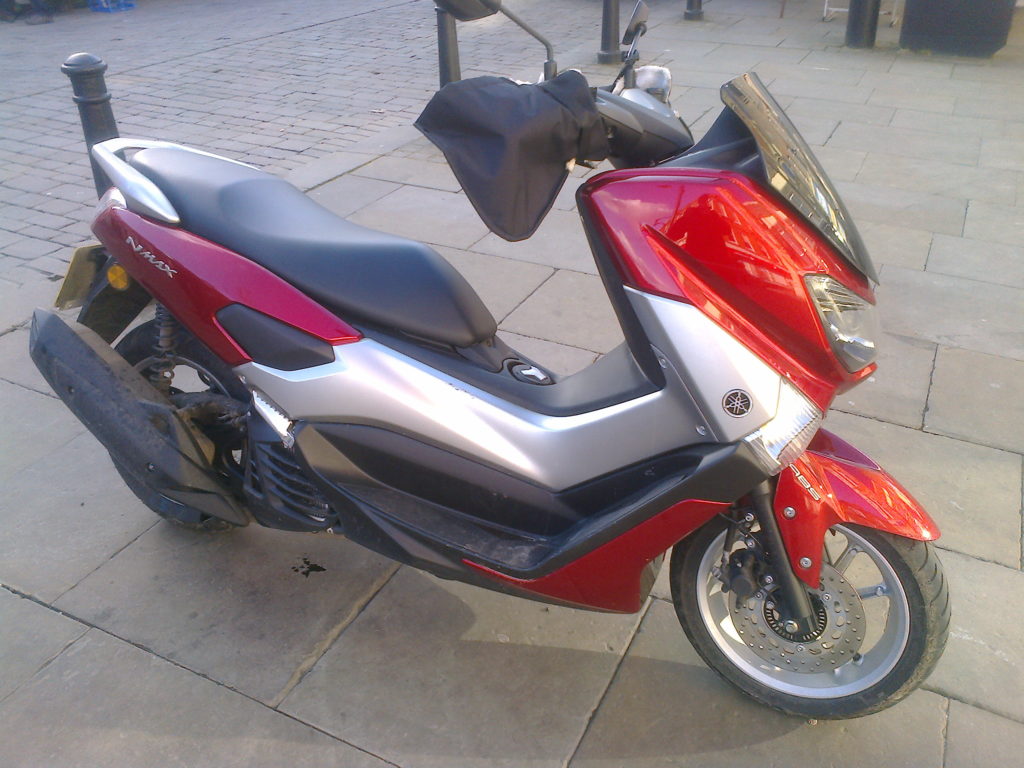
From the top, Bosch single channel ABS, Mr Wim van de Camp MEP outside the EU Parliament with the KTM Duke ABS 125cc motorcycle and a Yamaha 125 NMax scooter with ABS
Can you give examples?
“Yes, one of the first we noted is the KTM Duke 125cc. KTM supported the FIM dinner debate in the EU Parliament in 2014 over two years before the ABS law came into effect and displayed one there. Also at the top end of the 125cc market are the Yamaha X Max 125 and the Honda SH 125 with ABS.
“Yamaha then added ABS to their N Max 125. Piaggio market ABS scooters in Europe as well. They have also fitted ABS to the front wheel of a base model small scooter they sell in South East Asia. The ABS is manufactured by Bosch and the single channel unit fitted on the Asian market model is small enough to fit in the palm of your hand.
“So the European rider has plenty of ABS models to choose from in this category. It is also good that European companies Piaggio and Bosch are extending this safety technology to customers in other parts of the world. This is another example of how EU regulation also can affect other markets”.
We hear about new laws on the clothing you must wear when riding a motorcycle….can you explain?
“Yes! There are so many misunderstandings. When it comes to laws about what you can and cannot wear when riding a motorcycle or scooter that is a matter for national law. So for example Belgium has a law that prohibits riding around in a tee shirt and shorts. You must have you arms and legs covered.
“The Belgian law does not specify the type of clothing. So you could legally ride with a thin pair of walking trousers which is about as useless to safety as bare legs. On the other hand by passing this law the Belgian authorities say that it has encouraged more riders to go out and buy proper pair of motorcycling trousers and a jacket”.
What about European Union law?
“That is a different issue. The European Union is concerned more about consumer information and quality standards. So in future if you go into a motorcycle shop and buy a motorcycling jacket the EU wants it to meet certain criteria”.
But we already have that with the CE marking?
“No, in most cases we don’t. If you look carefully you will see that the CE marking often applies only to the impact protectors fitted to some motorcycle clothing….not the jacket or trousers as a complete piece.
“There are some exceptions as some products are made to a, “whole garment” specification. Unfortunately the current CE standards would not be appropriate for all countries in the EU. There are such varied climate conditions between motorcycle touring in Scandinavia and riding to and from work in Rome in the summer. FIM has observer status in the CE work and new standards to suit all different needs will be published early in 2017 for consultation”.
Are there other issues?
“Euro 4 regulations came into effect in 2016. Some motorcycles have disappeared from sale as manufacturers did not think it worth uprating them. Many of the new Euro 4 motorcycles are more fuel efficient, which is really great news.
“This process never ends and we are already deep into discussions about Euro 5!”
What about road safety?
“It has taken the developed world more than forty years to deal seriously with the issue of drinking and driving and change the attitude of citizens. Now I see that we are sleep walking into a new crisis with, “distracted driving” with people talking and texting on mobile phones.
“The French authorities were the first to comprehend the magnitude of this crisis. I have spoken many times to M. Joël Valmain who advises the French government on these matters and is also a senior representative of France in the United Nations road safety work in Geneva.
“I agree with his view that what can be done with laws and campaigns is limited. There are never going to be enough police officers to enforce laws to make the necessary difference.
“We need a technical solution where the mobile phone is disabled (at least partly) once it is inside a car. That way we can benefit from some features of smart phones that will improve safety and cut out the dangerous features that should not be used when driving.
“We know this can be done as technology companies are already filing patent applications for such systems”.
New vehicles are coming onto the road with communication vehicle to vehicle – is FIM Europe following these developments?
“Yes. This would be the part of the mobile phone that I would like to see still operating when the user is driving or riding!
“This has the potential to reduce the number and severity of collisions between motorcycles and other vehicles, especially at junctions. There is technical work to be done because in a city with many riders a car driver will soon ignore messages if he gets too many.
“At higher speeds away from other vehicles when the system can identify there is a risk then both rider and driver can be alerted.
“I am not against mobile phones – they need adaptation as part of the package of vehicle and phone so we get the benefits and not the problems of texting and conversations which dangerously distract us”.
You have spoken about the EU but FIM Europe is all of Europe, how relevant is this to countries that are not in the EU?
“Yes you are right. Of course Europe is much bigger than the EU. It is a fact though that EU issues have an influence across the whole world. We spoke earlier about clothing and riders in Australia seem to have far more knowledge about CE marking than anyone else! This is because the Australian company Draggin’ Jeans was the first to get CE “whole garment” approval for their top of the range motorcycling jeans.
“The EU is also one of the world leaders in vehicle regulations including motorcycles. So the specification of the motorcycle sold in Europe will affect what is sold elsewhere.
“Another area of our work is with the United Nations in Geneva which has an influence word wide. Few people know this but the UN also influences vehicle regulations, traffic laws, driving licences, and even the design of road signs. We have been active in UN work for the same time we have been working in Brussels. – Since 1988 to be precise”.
Was there a high point for you in 2016?
“Yes. The quality of the FIM Road Safety award this year was fantastic with two of the best rider training schemes (Sweden and Italy) up against the innovative new training device SKIDBIKE.
“FMI were well deserved winners. I recall the Congress we had in Treviso, Italy back in 2011 when FMI did a demonstration of their work. It is fantastic. The school training for young people, the vocational training they have done for postal workers and officials who conduct the riding test in Italy.
“This is co-operation between the FMI and government ministries is an example to everyone”.
Have you ever competed in motorcycle sport?
“Yes. A long time ago in the 1970s but I never won any races! I had some fun on the track. First with a Honda 400/4, – which was useless as a track bike. Then a Z650 Kawasaki which was a “hot” bike back then. It was fast but the single front disc made stopping something of a problem at times….
“I think it was one of the best things I ever did in my life as it cured me of ever wanting to go too fast on the road. This is why I so admire what they do up in Sweden with the partnership between SVEMO and SMC. “Want to have some fun?” “Come and ride with us…..on a circuit…” They do everything from road safety training to amateur competition that is pitched at the right level”.
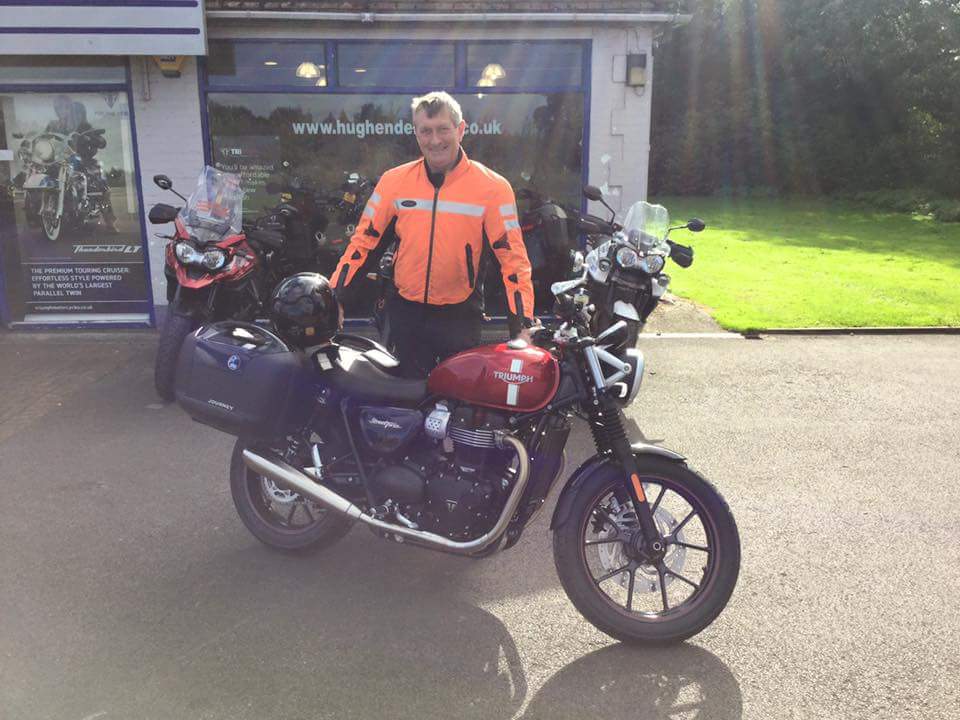
Above, Mr John Chatterton-Ross with his new Triumph
Do you still ride a road bike?
“Yes, I just sold a modern Kawasaki 650 that today is regarded as an “entry level” machine – but would have been fantastic to ride on a track back in the 1970s! The new bike is a Triumph – Euro 4 of course – but styled to look like a 1968 motorcycle”.
Finally, do you have special memories of events in motorcycle sport in your lifetime?
“Seeing Giacomo Agostini for the first time in the paddock at Silverstone. – Accompanied by the sound of his MV 350cc being warmed up. We knew we were in the presence of a super star. Years later I met him in the EU Parliament where he was helping us with some road safety work – he is a gentleman we still all admire.
“The 1970s Swedes in moto-cross. Bengt Åberg, Åke Jonsson or Arne Kring, I cannot recall which one of those three. – But I have never seen a moto-cross bike ridden so fast down the hill at Farleigh Castle. It was awesome! Moto-Cross riders really are something special – when you meet the veterans they are so fit and always seem much younger than their calendar age”.

